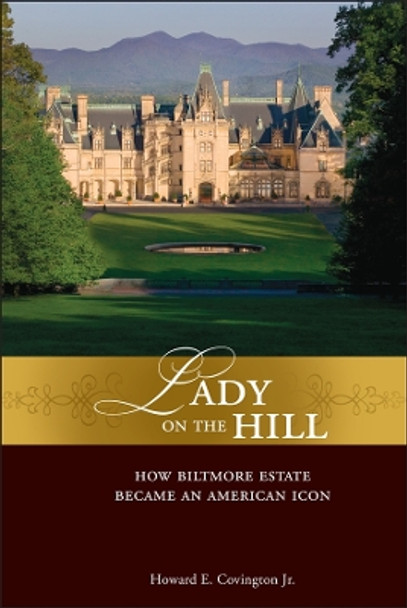Description
"What William Cecil has accomplished at Biltmore Estate is one of the great preservation success stories of all time. He has set a high standard for what all historic house museums strive for: magnificently preserved buildings and grounds, engaging interpretation, and--perhaps most challenging of all--economic self-sufficiency. It is no surprise that Biltmore Estate is widely recognized as one of America's finest places to visit."
-Richard Moe, President of the National Trust for Historic Preservation
"Biltmore is a glorious national historic landmark that, through creative vision and entrepreneurial management, preserves and provides insight into a way of life in the early 1900s. Bill is the imaginative and multifaceted leader who has built this great monument to enrich his community. George and I admire his dedication and success."
-George and Abby Rockefeller O'Neill
"Bill Cecil and his team at Biltmore Estate have sure proved that they know how to build a successful business. They did it the old-fashioned way: embrace a bold idea that others said could not be done and--through commitment, determination, and hard work--bring it to life. Their achievement against the odds is inspiring, and their vision and perseverance are valuable lessons to us all."
-Don Logan, Chairman, Media & Communications Group, Time Warner
"If George Vanderbilt did nothing more than engage the two most prominent and storied designers of their time, architect Richard Morris Hunt and landscape architect Frederick Law Olmsted, to carry out his vision of a European estate in the southern Appalachians, he would have created an American icon. The beauty of the method by which the estate was executed and, even today, the meticulous attention to detail, in the presentation and care of the estate by William Cecil, have brought history to life."
-Gary J. Walters, Chief Usher, The White House
About the Author
HOWARD E. COVINGTON JR., formerly an award-winning journalist, has been writing history and biography, much of it related to North Carolina, for more than twenty years. At the Charlotte Observer, he created and led reporting for a multipart series on health hazards in the textile industry that won the 1981 Pulitzer Prize for Public Service and more than a dozen other national reporting awards. His fifteen books include a biography of North Carolina governor and U.S. Senator Terry Sanford and a history of NationsBank (now Bank of America). In 2004, he received the North Carolina Literary and Historical Association's Ragan Old North State Award for best nonfiction by a North Carolina writer.
Reviews
Set amid thousands of lushly landscaped acres in the North Carolina mountains, the Biltmore estate is a 250-room Gilded Age mansion stuffed to the rafters with objets d'art. Writing a very authorized business history rather than an architectural appreciation, journalist Covington celebrates the estate's transformation from quasifeudal folly to lucrative tourist mecca. Built in 1895 by George Vanderbilt, who played lord of the manor to hundreds of tenant farmers and servants, the estate passed in the 1960s to his grandson William Cecil, whose tight-fisted budgets, canny marketing initiatives and rapt attention to customer service turned it into a profitable museum of robber-baron privilege, selling more tickets than Colonial Williamsburg. The author's sycophantic account of this not unduly exciting saga is mainly a tribute to Cecil, who wrote the afterword. Covington defends the Biltmore owner's model of private, for-profit historical preservation against charges of commercialism leveled by nonprofit preservationists, repeats his complaints about inheritance taxes, extols his entrepreneurial daring, salutes his Biltmore restoration projects ("surpassed what many had seen anywhere") and raves about "customer satisfaction reports... comparable to those enjoyed by a five-star resort." This anodyne hospitality-industry success story will find a place in the Biltmore gift shop, but probably nowhere else. (Mar.) (Publishers Weekly, January 2, 2006)
Book Information
ISBN 9780471758181
Author Howard E. Covington
Format Hardback
Page Count 352
Imprint John Wiley & Sons Inc
Publisher John Wiley & Sons Inc
Weight(grams) 567g
Dimensions(mm) 241mm * 160mm * 31mm








